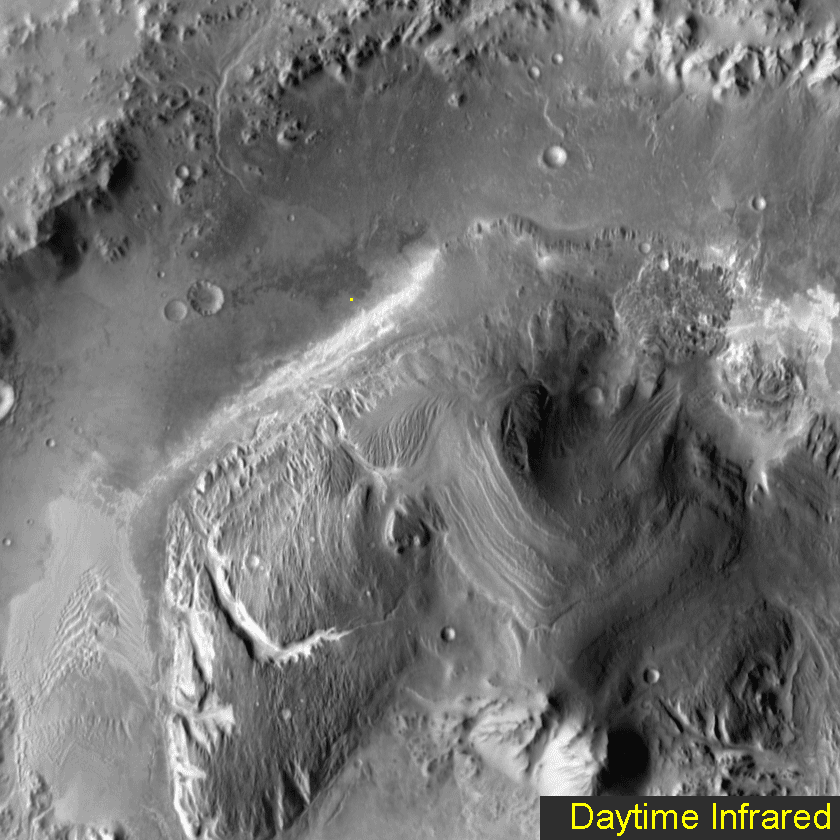Bruce Murray Space Image Library
Blink comparison of daytime and nighttime infrared views of Gale crater

During the day, the surface of Mars are heated by the Sun, so a Mars Odyssey THEMIS daytime thermal infrared view looks similar to a visible-light view. At night, rocks retain heat better than dust, so rocky areas appear bright and dusty or sandy areas appear dark. Rock composition and texture also affects thermal inertia and the appearance of the materials at night.
More THEMIS data over Gale crater can be downloaded here. The data was originally released on July 14, 2006.


 Explore Worlds
Explore Worlds Find Life
Find Life Defend Earth
Defend Earth

